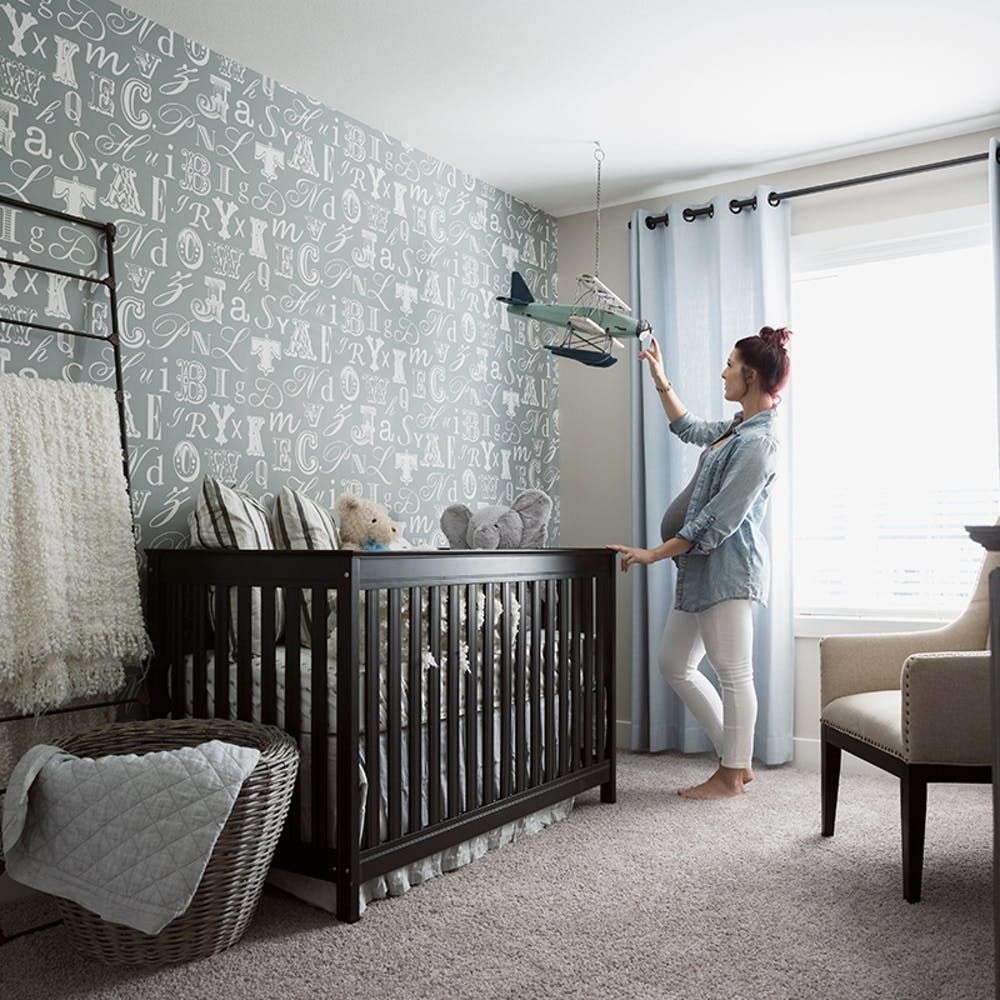After designing countless nurseries, it wasn’t until I became a mom that I realized the best layout was driven by routine. There is a changing routine, a sleeping routine and a playtime routine. All have specific needs and requirements, which can be solved by a thoughtful layout that will make your life easier. Whether you are starting with a clean slate and can dictate the layout or are working with an existing floor plan, using strategies initiated by routine is the key to a well-functioning nursery.
The Changing Routine
Here, safety is your priority. It’s ideal to have all your necessities in arm’s reach so you never have to step away and take a hand or eye off of the baby. Have the changing table pad over your dresser where you keep changes of clothes, diapers, wipes, and hand sanitizer in the drawers or baskets below. Next to the changing table, keep the diaper trash and make it hands free, sans any lids to open. Being in close proximity to the closet is ideal so you can pick up extra clothes from the closet before setting the baby down to change and also so you can drop the dirty clothes in the hamper after changing. An efficient layout makes for fast changes to prevent a fussy, squirming baby. It also ensures that you’ll never sacrifice safety. You’ll never have to leave your baby on the changing table while you have to walk across the room to grab something. It’s great to have the changing table near a window so the baby can look out, making for a great opportunity to get some natural light after naps or in the morning.
The Sleep Routine
Until becoming a mom, you might not fully appreciate the importance of a good sleep routine and the rituals that signal to the baby that it’s time for sleep. Getting your baby in the mood for sleep is critical. Sending the right cues will make this process much easier; not unlike the changing table proximities, having your sleep tools at your fingertips is essential. Invest in a glider, rocker or comfortable chair to read stories, rock your baby, and sing songs. It’s just as important to make this a comfortable place for you; you may be spending a lot of time in there. It’s ideal to put a pouf or ottoman under your feet for extra comfort. Within reach should be books, a music player for baby lullabies, sound machine, and a dimmer table lamp. If these items are not in arm’s distance, you may find yourself needing to get up and down and disrupting the mood.
When laying out a nursery, have the crib against a wall versus under or next to a window. For one, it’s safer, but also prevents draft. Steer clear of tall bookshelves that the baby could climb on when they get mobile, even if you have it secured to the wall. And, keeping even the shortest bookshelf away from the crib will prevent the temptation of your little one from climbing out of the crib and using the bookshelf as a jungle gym.
Blackout shades are highly recommended. Even with the shades, there is some light that filters out the sides. A dim room sets the mood, which is critical to getting your baby to sleep faster. If you have any shades, make sure all chords have a safety release or secured at a height which would make it impossible for a baby to reach.
The Playtime Routine
Even if you have a designated play space outside of the nursery, it’s nice to dedicate space in the baby’s room for playtime and not have it all be about sleep. Make just enough space to have a toy bin and comfortable rug or playmat. Make sure the toy bin isn’t too close to the crib so your baby isn’t helping themselves to toys when they should be sleeping. Being near a window for natural lighting is great as well.
While I’ve worked with a range of nursery sizes and layouts, it’s most important to provide a safe environment for the baby, while also giving yourself a comfortable layout that makes the changing, sleeping and playtime routines as easy as possible with frantic moments hopefully being avoided.
Are you putting together a nursery of your own? Let us know which tip is most useful to you by sharing with us on Facebook.
(Photo via Getty Images)


